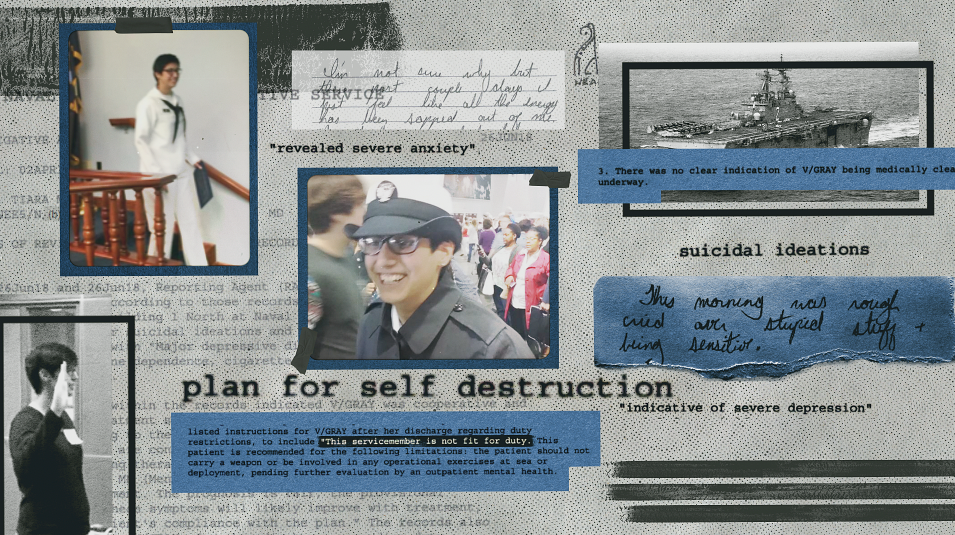A Navy judge ruled Friday that a sailor was not guilty of setting a fire that destroyed the USS Bonhomme Richard in San Diego in 2020.
The ruling came after a nine-day trial at Naval Base San Diego. Ryan Sawyer Mays, who had been charged with arson and the willful hazarding of a ship, let out a deep breath, put both hands on the defense table and broke into sobs. Mays embraced members of his defense team, then ran over to his wife and parents, where they hugged and sobbed for several minutes. At one point, Mays' mother was heard telling him, "I had no doubt."
“Seaman Recruit Mays was found not guilty on the charges of willful hazarding of a vessel and aggravated arson. The Navy is committed to upholding the principles of due process and a fair trial,” said Lt. Samuel R. Boyle, spokesman for U.S. 3rd Fleet.
Prosecutors accused then-19-year-old Mays of igniting cardboard boxes in a lower vehicle storage area to drive home an earlier text to his division officer that the ship was so cluttered with contractors’ stuff it was “hazardous as (expletive).” They contended that Mays was angry and vengeful about failing to become a Navy SEAL and being assigned to deck duty and ignited the ship to send a message.
Get top local stories in San Diego delivered to you every morning. Sign up for NBC San Diego's News Headlines newsletter.
There is no physical evidence, however, tying Mays to the fire on the ship, which was docked and undergoing maintenance at that time.
Outside the courtroom building at Naval Base San Diego, Mays read a brief statement to reporters and declined to answer questions. He did not address his plans.
“I can say that the past two years have been the hardest two years of my entire life, as a young man,” he said. “I’ve lost time with friends. I’ve lost friends. I’ve lost time with family and my entire Navy career was ruined. I am looking forward to starting over.”
Local
The prosecution acknowledged that a Navy report last year concluded the fire that destroyed the $1.2 billion amphibious assault ship was preventable and unacceptable and that there were lapses in training, coordination, communications, fire preparedness, equipment maintenance and overall command and control. The failure to extinguish or contain the fire led to temperatures exceeding 1,200 degrees (649 Celsius) in some areas, melting sections of the ship into molten metal that flowed into other parts of the ship.
More than 20 senior officers and sailor were disciplined in connection with the incident.
Defense lawyers argued the trial exposed a shoddy probe by government investigators who rushed to judgment and failed to collect evidence showing that the culprit also could have been lithium ion batteries or a sparking forklift instead of arson.
The prosecution said that investigators found no scientific data to back the theory that batteries or a forklift malfunction sparked the inferno, while testimony from fellow shipmates bolstered the case against Mays along with his own words when he was being escorted in handcuffs and blurted out, according to the sailor escorting him to the brig: “It had to be done. I did it.”
The defense said Mays, known for being flippant, was being sarcastic after denying doing it more than 150 times during 10 hours of questioning by investigators.



